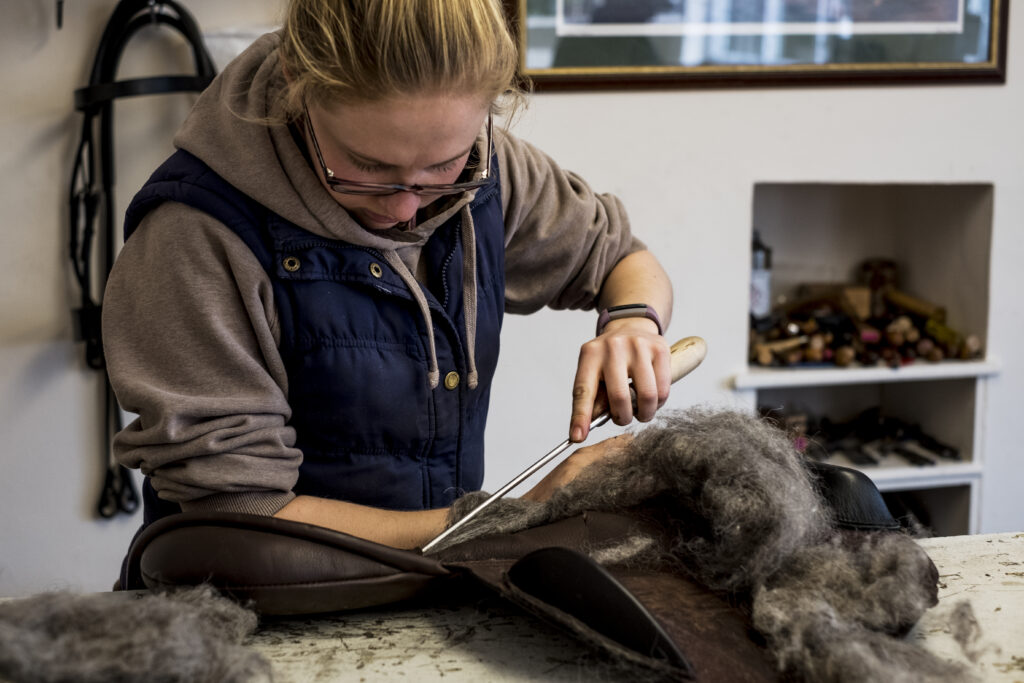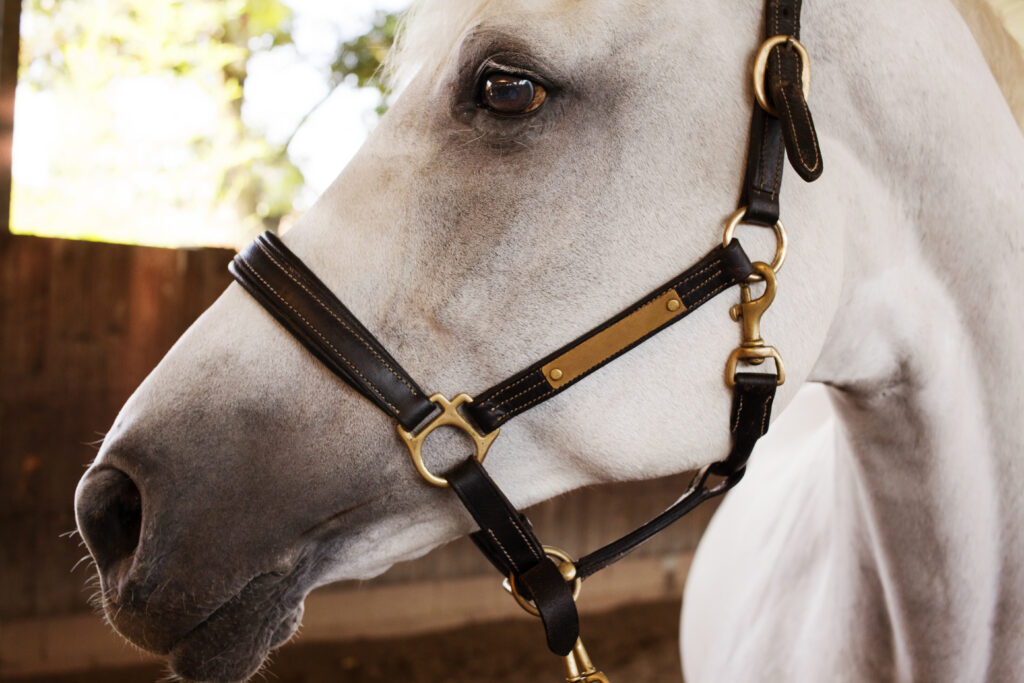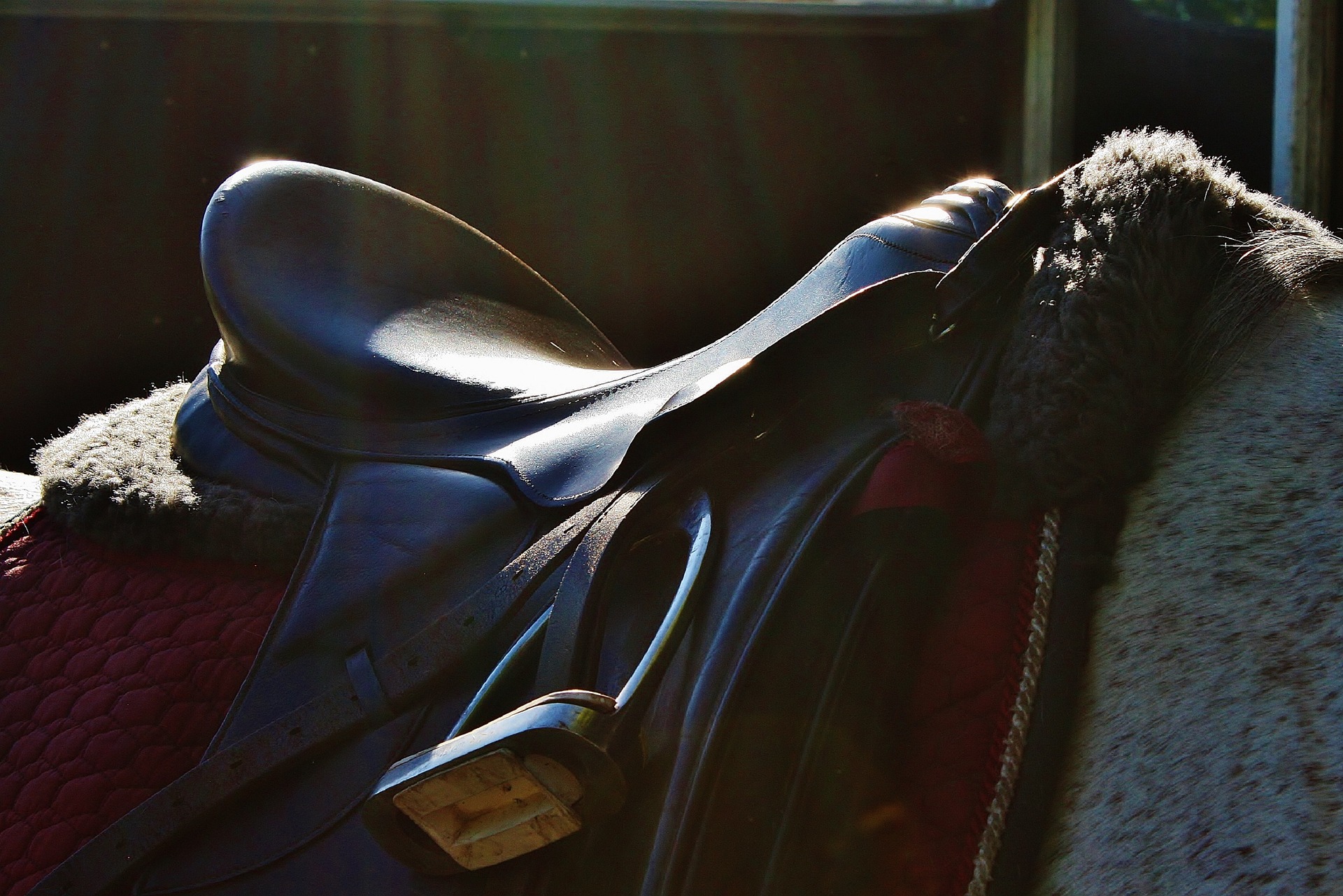There truly is no clear answer to the question of how long a horse can be saddled. It will vary based on the circumstances and the particular horse in question.
A horse can be safely ridden for around 8 hours in a single day. Horses can be saddled for longer if they’re not actively working, but they should have enough time in the day to sleep and rest without the saddle.
Leaving a saddle on a horse’s back for too long could cause injury or damage to the tack. Horses that are unattended might decide to lie down, roll over, or scrape against another object.
A saddle that fits poorly can also strain a horse’s spine or cause tense back muscles. If a saddle is extremely uncomfortable, it can even affect the horse’s behavior. Therefore, if your horse is acting strangely without a readily apparent reason, consider whether saddle fit could be a problem.
When in doubt, monitor your horse for obvious symptoms that they’ve been wearing a saddle for too long. Pay extra attention if it’s a new saddle or your horse is still learning to wear one in the first place.
Age And Demeanor Of The Horse
How long you can leave a saddle on a horse will also depend on the age and demeanor of your horse. An older horse is likely to tire more quickly and needs more consideration than a younger horse while riding for pleasure or working.
A very young horse who’s unaccustomed to wearing a saddle at all may protest wearing a saddle for long stretches at a time. Horses who are new to wearing a saddle might buck or attempt to knock off the saddle.

Even a horse that’s used to wearing a saddle might have a difficult time adjusting to a new riding school or event. For example, a horse that’s used to jumping and dressage saddles might dislike the additional weight of a heavy Western saddle.
It’s important to allow horses time to adjust when switching to a different riding school or using a Western saddle or English saddle when your horse is used to the other. This is partial to check the right fit and partially to allow your horse time to adjust.
Most will adjust quickly and won’t have difficulty moving forward with a longer riding schedule or a new style of saddle. It may also take some trial and error to find the right style if you’re shopping for a new saddle altogether.
Saddle Sores And Health Concerns
You can eliminate some of the concerns about saddle sores by maintaining your saddle to reduce dust and dirt. A dirty saddle can cause friction and wear on the horse’s saddle support area.
You might notice raw patches, scar tissue, or white hair on the horse’s shoulder blade, back, or lumbar region. These can develop into saddle sores, which puts that particular horse at risk of infection from open wounds.
Routine saddle maintenance should include cleaning the saddle with saddle soap or another type of leather detergent. Saddles should always be stored in a dry location like a saddle rack in a tack room.
Properly maintaining saddles is key to reducing friction and improving comfort. Periodically inspecting saddles ensures that you’ll notice any potential concerns like fraying or wear that should be addressed before saddling up.
Saddle Fit
Saddle fit is another factor that influences how long you can leave a horse saddled. A horse who’s used to a particular Western or English saddle is more likely to be comfortable with that saddle.
Since saddles conform to a horse’s body, a horse that repeatedly uses the same saddle is more likely to tolerate that saddle for longer without issue. This is especially true if the saddle is the correct length and the saddle fits properly. After all, a horse with an irritated shoulder blade or sore back is likely to be extremely uncomfortable and may resist wearing that saddle for more than a short time.
Choosing a quality saddle pad with sufficient cushioning can make a difference as well. The saddle pad will serve as a buffer against impact while riding, and some pads can also be used to ensure a better overall fit.
A Horse’s Saddle Support Area
Saddle length and overall dimensions can make a significant difference in fit, so a particular horse’s saddle won’t always fall within the proper saddle support area for another horse. Saddle length will differ from the saddle to saddle, with most falling within a general range based on the average saddle length for most horses.
Not all horses will fall within this range. That’s why it’s important to know your own horses and each horse’s body relative to the saddles that are available. A long saddle placed on a horse with a short saddle support area is likely to cause pain and discomfort.
Over time, this can lead to saddle sores and severe pain. In extreme cases, wearing the wrong saddle for too long can even cause pinched nerves and more serious conditions.
Saddle Makers And Fitters
If a saddle simply isn’t fitting well enough for the horse to tolerate wearing it for an extended period of time, then it may be beneficial to consult saddle fitters to determine the problem.

Saddle fitters assess the horse to see if there’s a saddle length issue or whether your saddle ideally matches what your horse needs. They may place a chalk line at different key points on the horse’s back to see if the horse requires a saddle of a normal length or one that’s a bit longer or shorter.
Colors can help distinguish intersecting points. For example, a saddle fitter might establish that red lines represent a changing directional pattern in the horse’s hair. The difference between the first chalk line and the second chalk line might mark out an obvious visual of where a saddle should ideally sit.
From there, fitters can recommend a particular kind of saddle. Saddle makers can customize saddles or assess horses for specialty saddles that match the needs of a particular event like jumping or roping.
Bridles And Bags
A horse’s comfort will also be affected by whether they’re wearing other tacks like a bridle or carrying heavy saddle bags.
Wearing a bit can interfere with eating, and some horses are trained to avoid grazing or eating while wearing a bridle. This could send mixed messages to the horse about when they’re allowed to eat if they’re wearing a bridle for an extended period of time.

Carrying bags could also lead to fatigue and wear your horse out faster since they’re supporting more weight for longer. Obviously, larger and stockier breeds will be able to tolerate more weight than smaller ones, but the weight should always be part of your decision-making process when calculating how long your horse can remain saddled.
Final Thoughts
Overall, there’s no obvious answer to how long horses can be saddled. So much will depend on how comfortable the horse is with the saddle.
Most horses will tolerate up to 8 hours of riding in a day. Horses can be saddled for longer periods if they’re not working and moving, but it should never be so excessive that the horse doesn’t have enough time to rest without wearing tack.
You should always place a saddle gently and take care to protect your horse’s back from unnecessary strain. A horse ridden in an uncomfortable saddle will begin to protest long before a horse wearing a saddle that fits properly and is well maintained.
The best advice when determining how long a horse can wear a saddle is to look for feedback from your horse. If they look distressed or their behavior has changed, it can be a sign that they’re in pain or upset.
If your horse is new to wearing a saddle at all, it’s best to start slow and help them grow accustomed to the saddle. The weight on their back and the tightness of the girth can be disorienting, so have patience while you navigate such an important time with your horse.
Frequently Asked Questions (FAQ):
Do Saddles Hurt Horses’ Backs?
No, saddles don’t usually cause pain to horses. A saddle could end up hurting a horse’s back if it’s an ill-fitting saddle or doesn’t sit on the horse’s saddle support area. If a horse is obviously in pain, check your tack and call a vet if it persists. There may be an unseen injury on your horse’s rib cage or back that you haven’t noticed.
Can Leaving a Saddle on a Horse Cause Damage to the Saddle?
Yes, leaving a saddle on a horse while unattended could result in accidental damage to the saddle, especially if the horse finds it annoying or uncomfortable. Horses that are left unattended while saddled might rub against something abrasive or even lie down, which can cause damage.
Can You Leave a Horse Saddled Overnight?
Although it’s not recommended to leave horses saddled overnight while unattended, you can do so as long as it’s safe for a particular horse. This might occur if you need a horse available at short notice. Horses should otherwise have a break from the saddle and adequate rest during another time of day.



